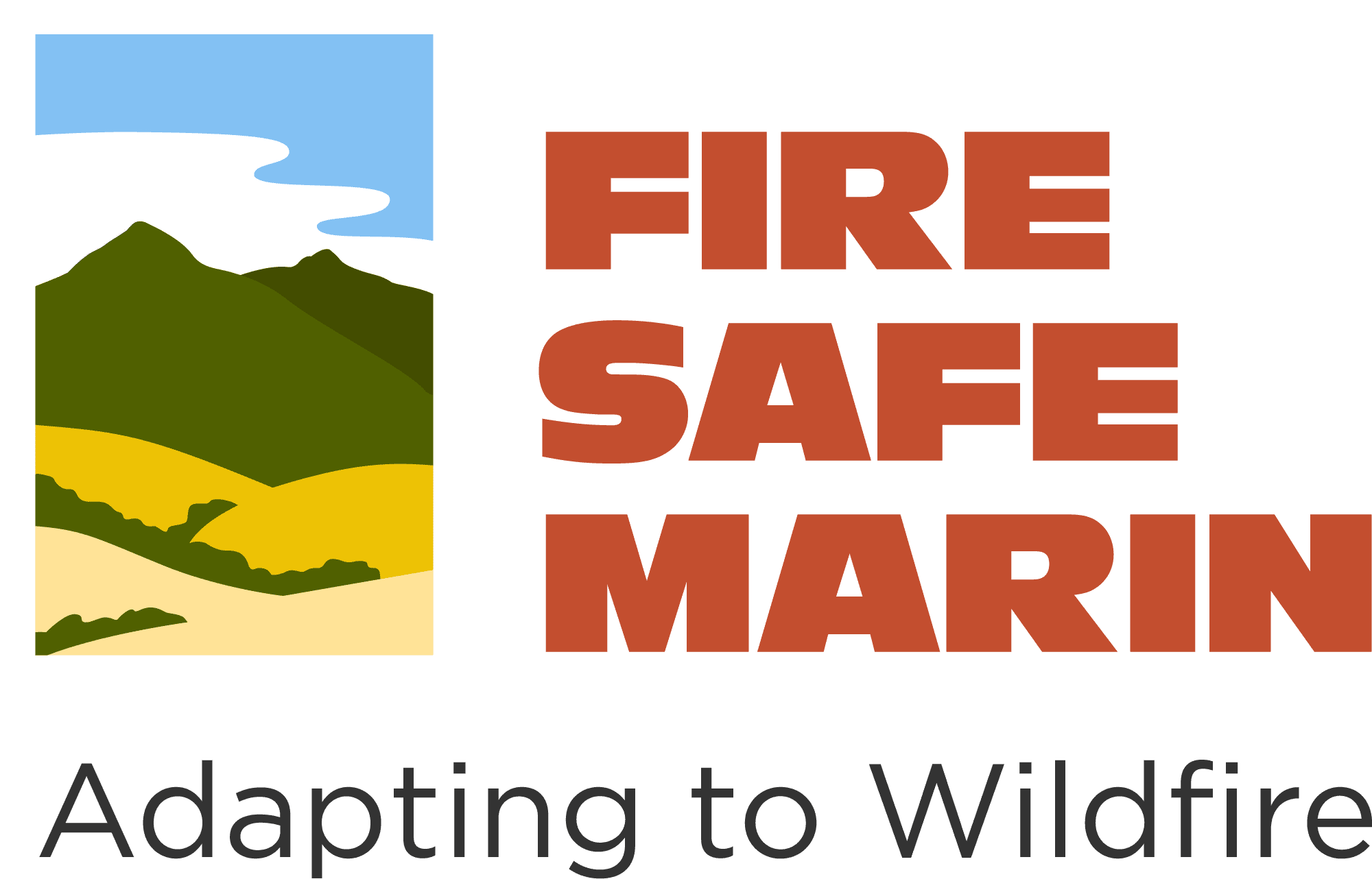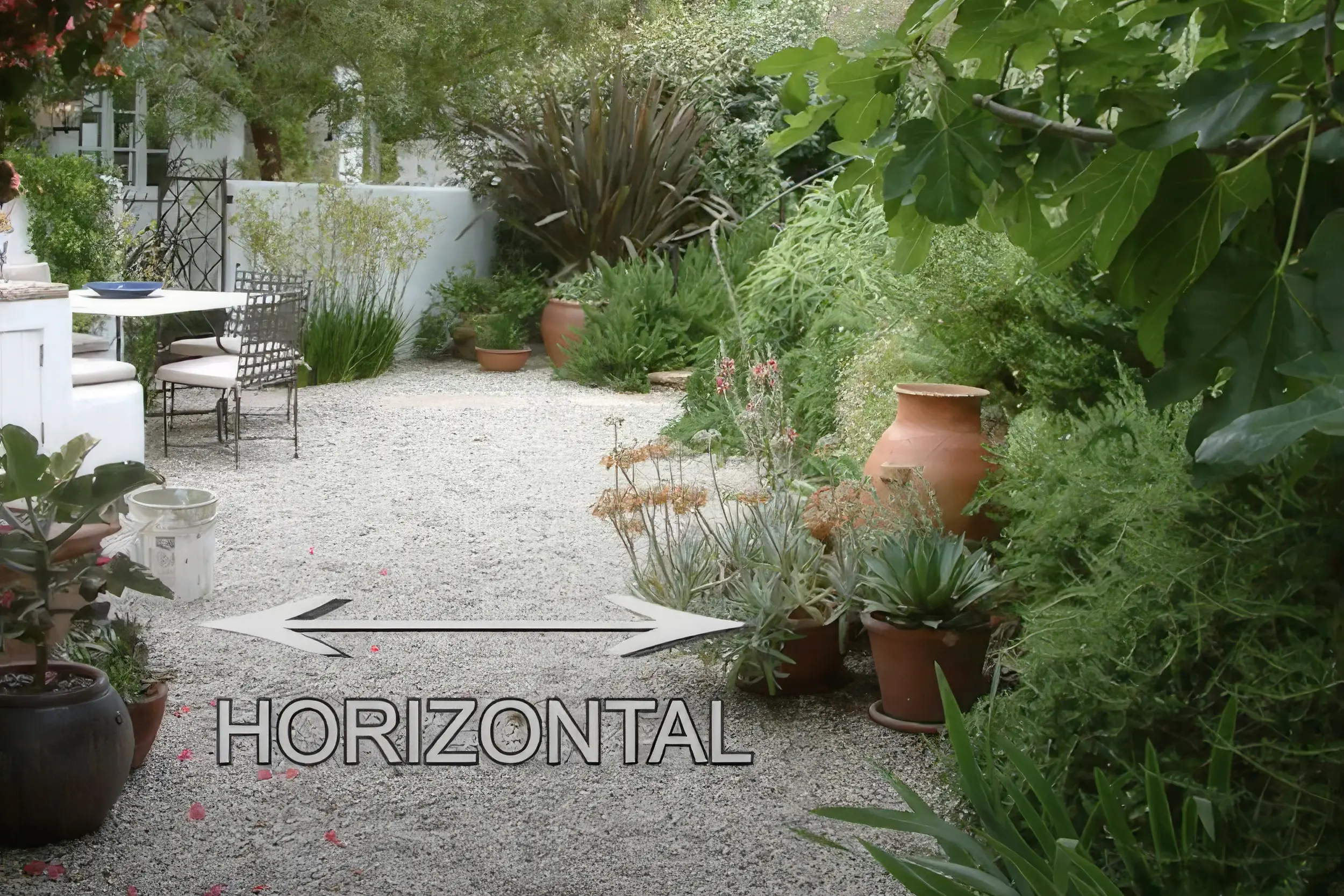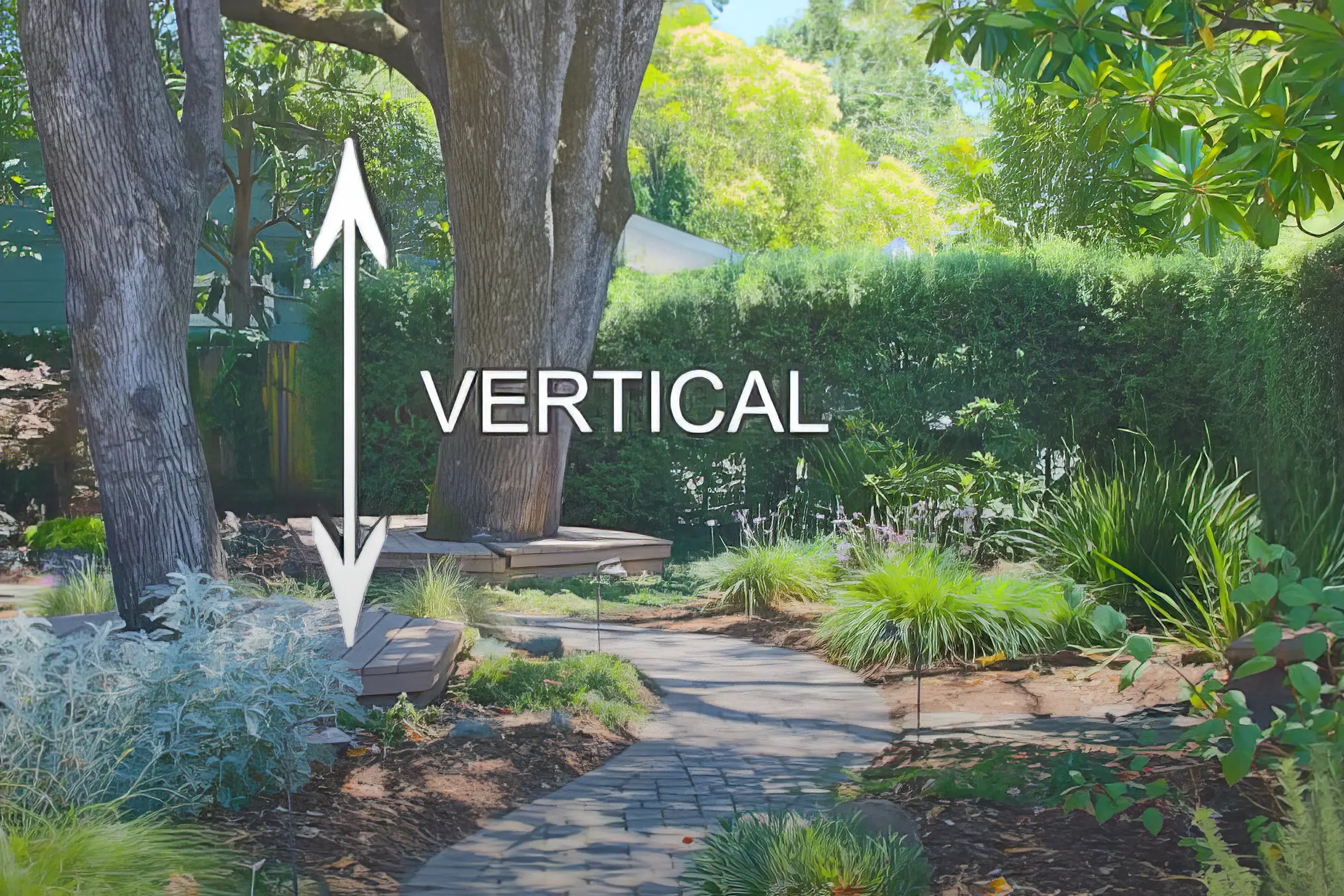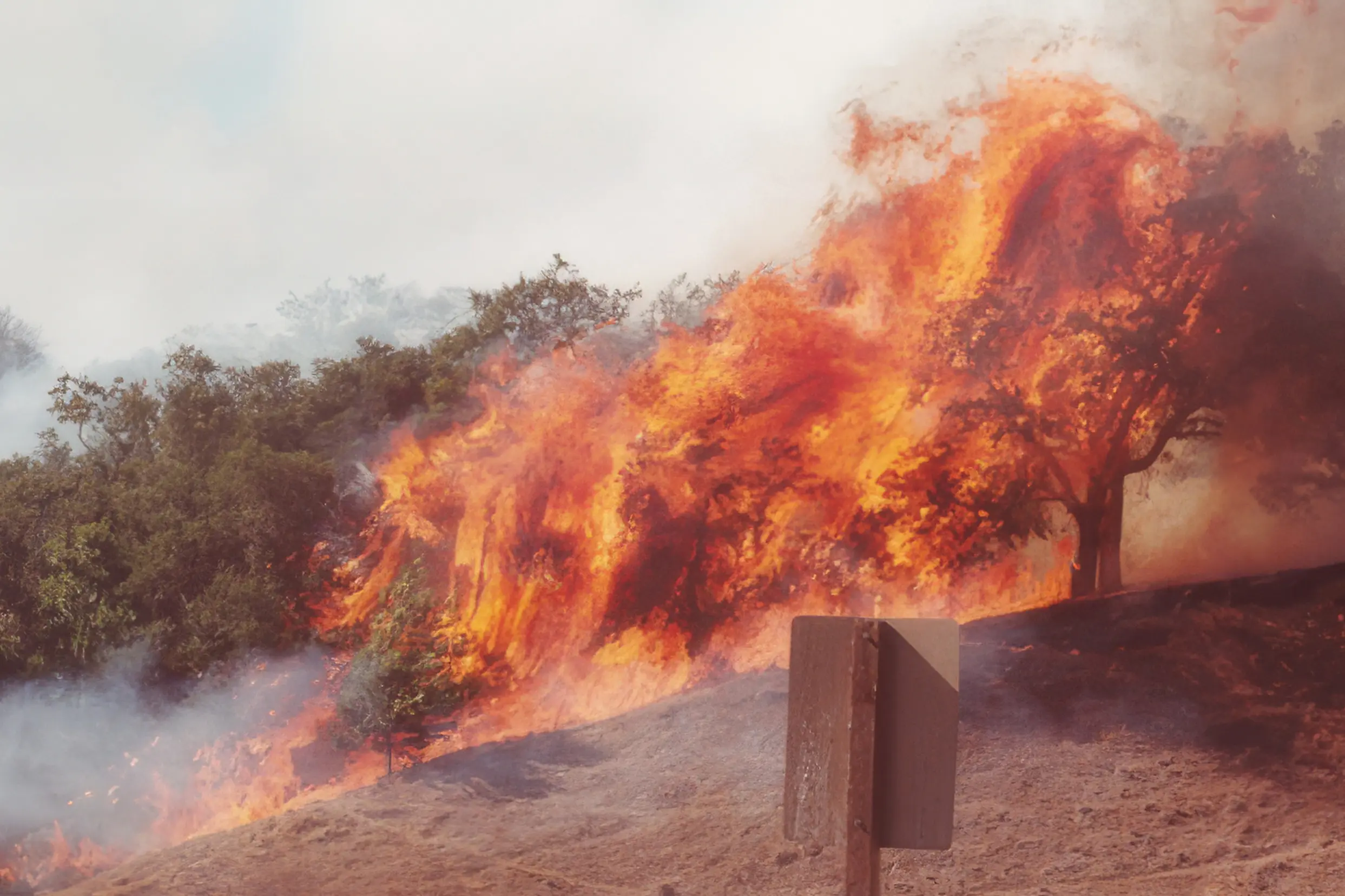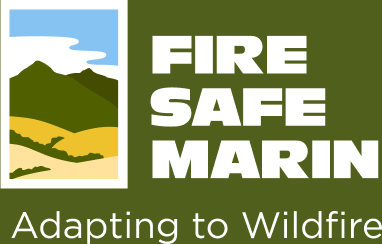IN THE EVENT OF AN EMERGENCY THIS SITE IS NOT MONITORED. FOR CURRENT INFORMATION GO TO HTTPS://EMERGENCY.MARINCOUNTY.GOV.
Plant & Tree Spacing
Plants should be horizontally separated by hardscape or mulch to reduce the spread of fire and vertically separated to reduce spread of fire to trees
Creating space between plants in the yard, both vertically and horizontally, slows or stops the spread of fire. Horizontal spacing can be achieved by planting in clusters called plant islands or beds. Hardscape materials like stone, gravel, and boulders helps create this space and can be used as attractive pathways throughout the garden. Vertical space is created by limbing up trees and reducing the height of plants near or under the trees. This eliminates a feature called ladder fuels which can spread fire from grass to brush to the trees themselves. Remember that on hillsides more space is needed between trees and shrubs to reduce fire spread.
Space around plants creates a fuel break to slow the spread of fire to a house. Design your yard with these principle in mind:
- Use mulch or low-growing ground cover beneath trees to prevent fire from traveling from ground to the canopy.
- Group plants in “islands” separated by hardscaping to interrupt the pathway of fire.
- Use a variety of hardscape and mulch textures to add interest to your firescaping.
- Functional features, like walkways, paths, and planting boxes can be strategically used as fire breaks in aesthetically pleasing ways. (This principle addresses the two photos below).
- Replace large lawns with sections of grasses, flowers, pathways and beds to minimize the need for continuous watering.
Plant “islands” or beds are a good placement strategy. In the photo below several different mulches are used including gravel, wood chips, and decomposed granite to help create space between pants. Plants are grouped together and boulders are both aesthetically pleasing and aid in plant separation. There should be no plants immediately adjacent to the home.
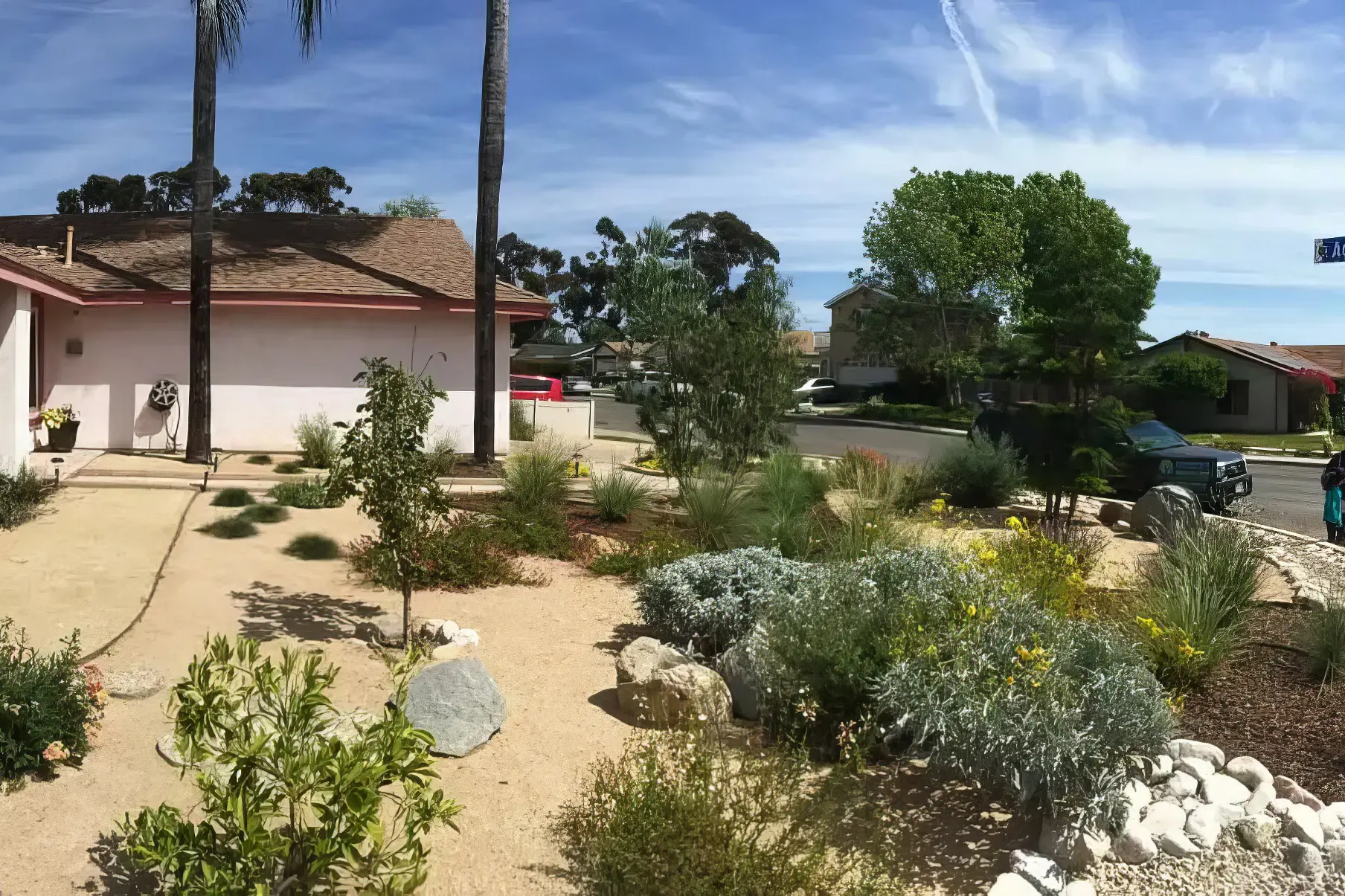
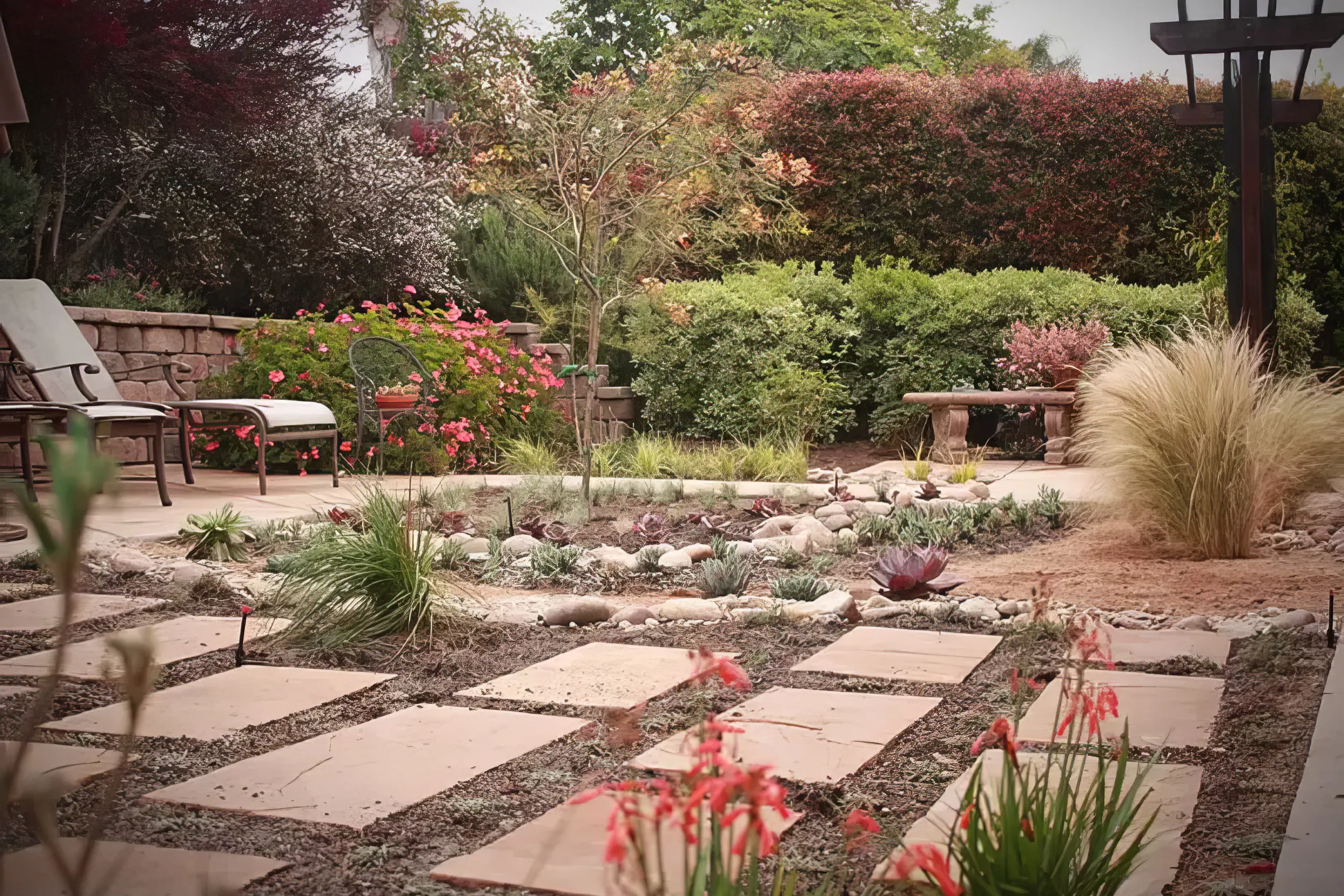
In the photo below plants are grouped and separated with hardscape and mulch. Flagstones create space and pathways. Different rock materials are attractive. Stone walls can help stop fire from spreading.
The photo below shows the use of planters, various mulches, hardscape, and plant separation. These plants are well separated and several different methods are used to create horizontal spacing including stone steps, mulch, lawn and planter boxes.
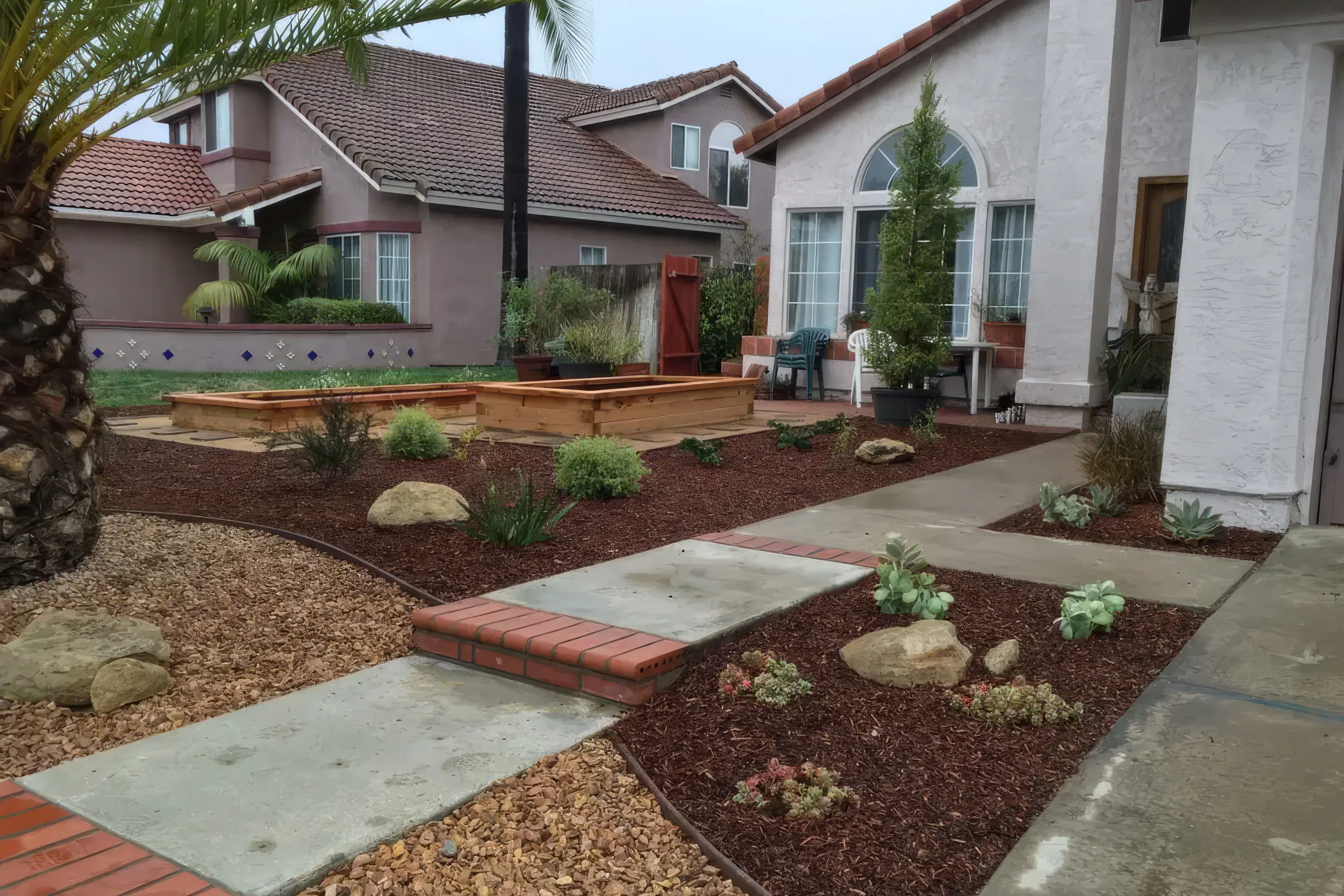
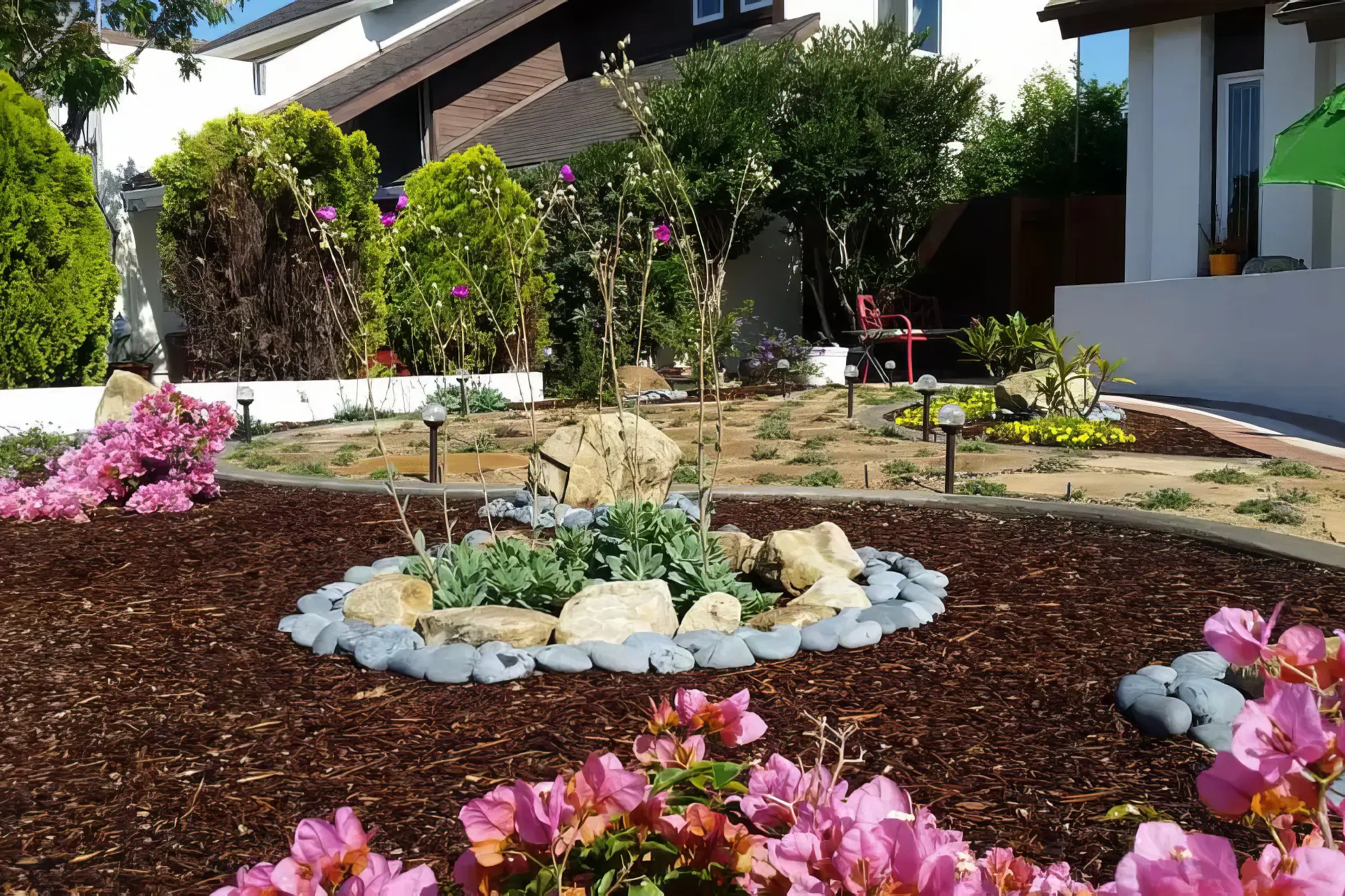
The photo below shows good separation with various materials and strategies. Again we see different mulch and crushed granite, plant beds or islands, and attractive use of boulders.
If you are considering replacing your lawn for drought tolerance, here are some ideas for creating a fire smart landscape that is also drought resistant. See use of crushed granite paths and horizontal plant spacing.
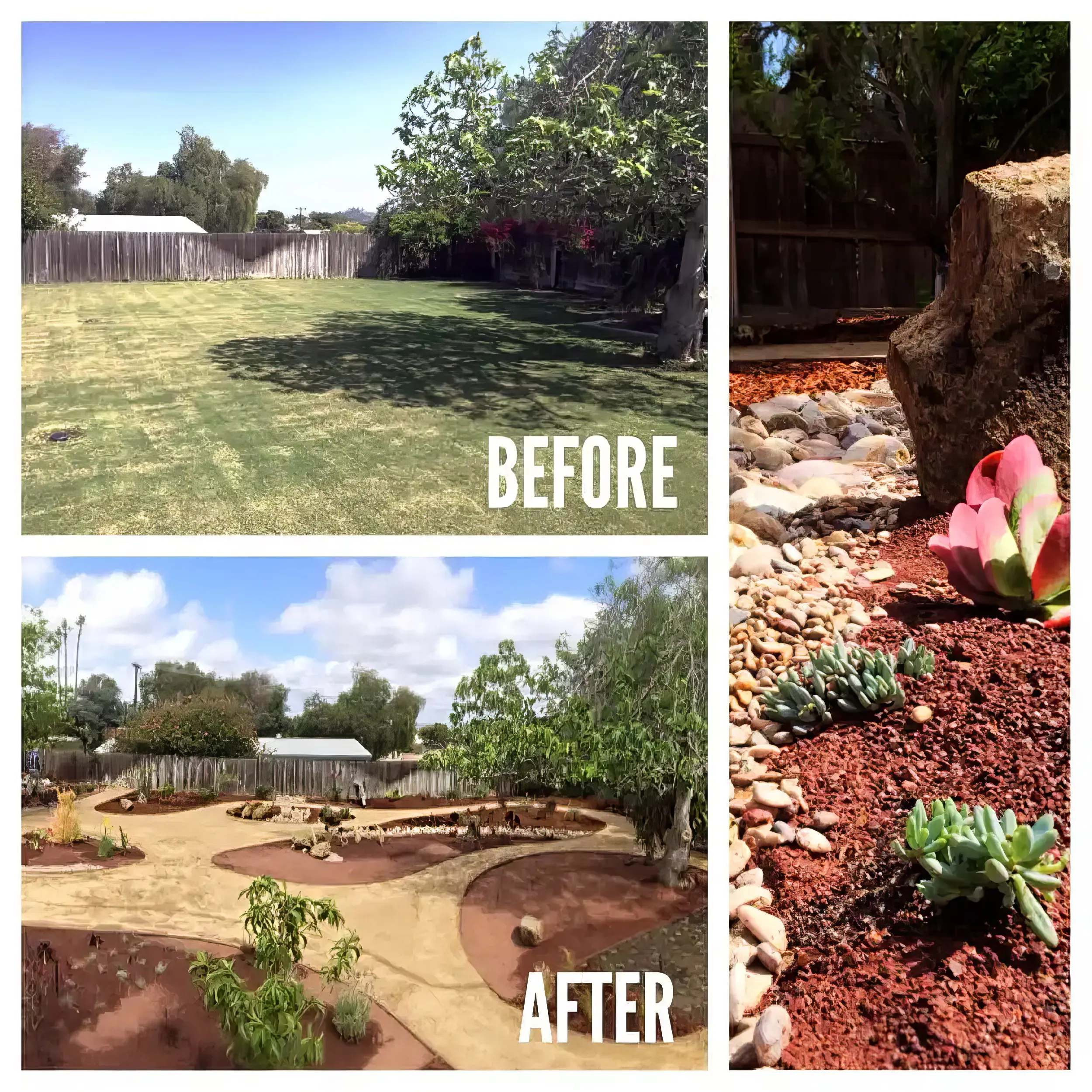
Vertical Spacing
The spacing between grass, shrubs, and trees is crucial to reduce the spread of wildfires. The amount of spacing needed is determined by the type and size of brush and trees, as well as the slope of the land. For example, a property on a steep slope with larger vegetation requires greater spacing between trees and shrubs than a level property that has small, sparse vegetation.
Recommendations:
- Remove all tree branches at least 6 feet from the ground.
- Allow extra vertical space between shrubs and trees. Lack of vertical space can allow a fire to move from the ground to the brush to the tree tops like a ladder.
To determine the proper vertical spacing between shrubs and the lowest branches of trees, use the formula below.
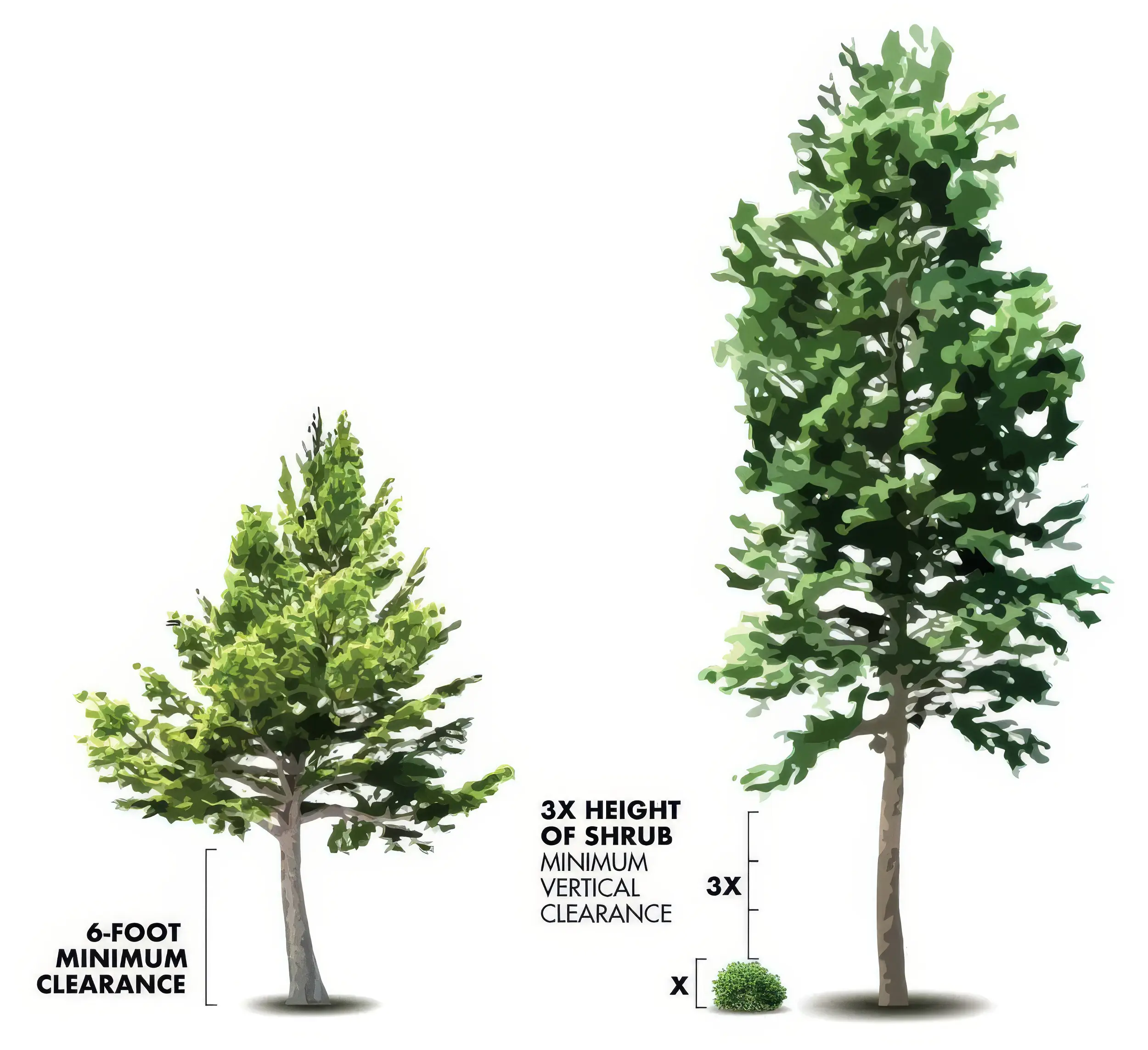
Example: A five-foot shrub is growing near a tree. 3 x 5 = 15 feet of clearance needed between the top of the shrub and the lowest tree branch.
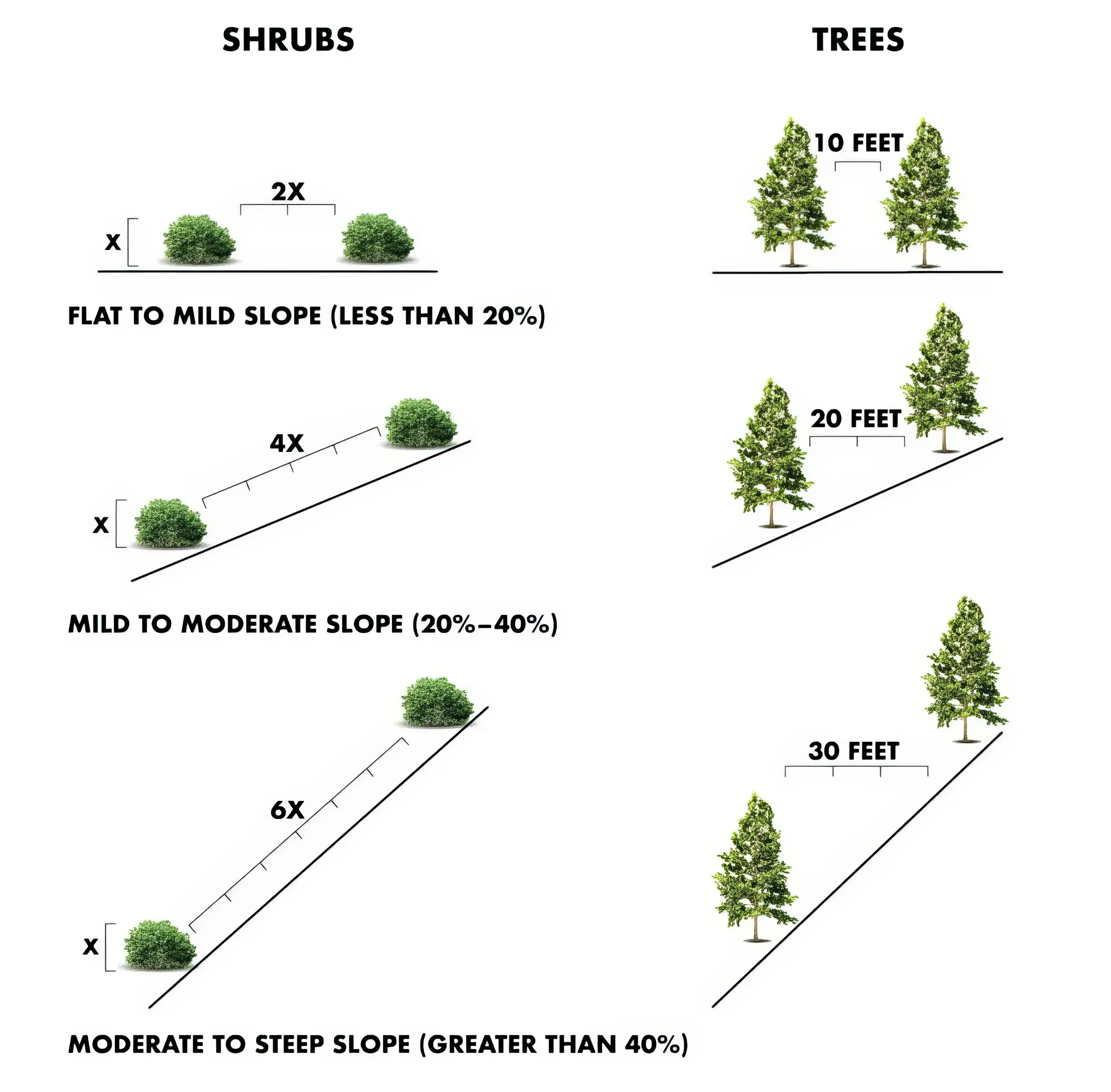
Horizontal Spacing
Horizontal spacing depends on the slope of the land and the height of the shrubs or trees. Check the chart below to determine spacing distance.
Always be sure to select the right tree for the right place.
The information contained on this page is derived from several print and online sources:
- University of California Publication 8228. Home Landscaping for Fire. 2007. University of California, Davis.
- http://www.readyforwildfire.org/ Wildfire is Coming: Are You Ready. CAL FIRE. 2012.
- Urban Forestry Associates. Ray Moritz, Urban Forester and Fire Ecologist.
